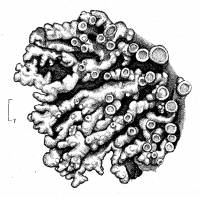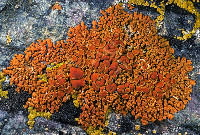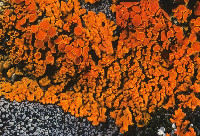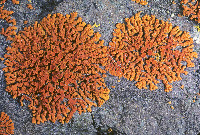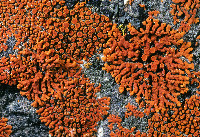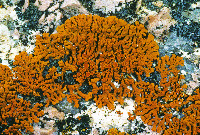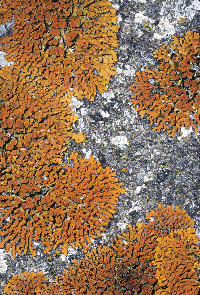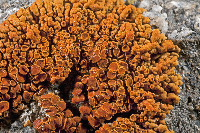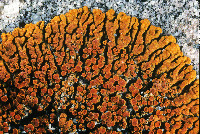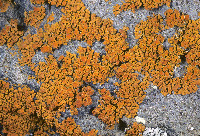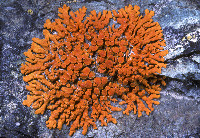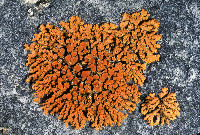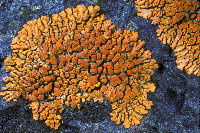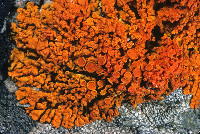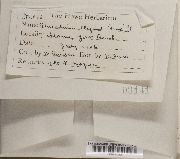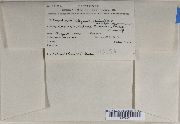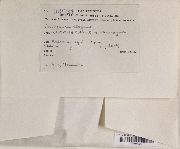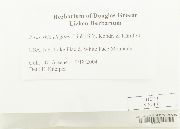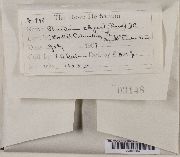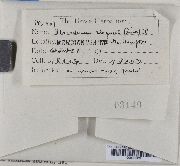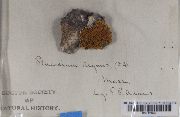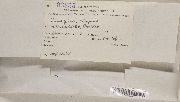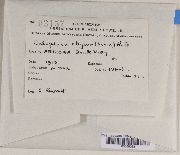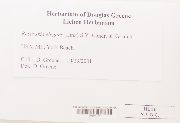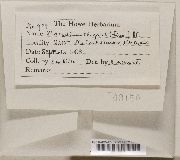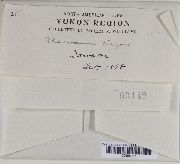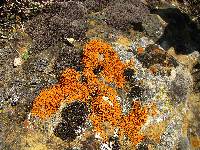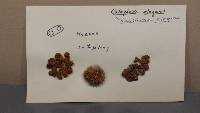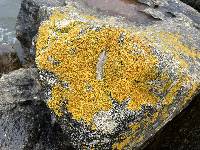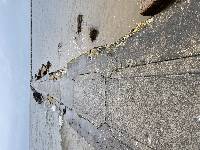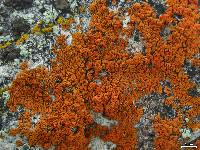
Consortium of Lichen Herbaria
- building a Global Consortium of Bryophytes and Lichens as keystones of cryptobiotic communities -
- Home
- Search
- Images
- Species Checklists
- US States: O-Z >
- US National Parks
- Central America
- South America
- US National Parks
- Southern Subpolar Region
|
Rusavskia elegans (Link) S.Y. Kondr. & Kärnefelt
 (redirected from: Xanthoria elegans (Link) Th. Fr.) (redirected from: Xanthoria elegans (Link) Th. Fr.) |
|
|
Family: Teloschistaceae
[Amphiloma elegans (Link) Körb., moreAmphiloma elegans f. elegans (Link) Körb., Amphiloma elegans var. elegans (Link) Körb., Callopisma elegans (Link) Trevis., Caloplaca dissidens (Nyl.) Mérat, Caloplaca elegans (Link.) Th. Fr., Caloplaca elegans f. elegans (Link) Th. Fr., Caloplaca elegans var. elegans (Link) Th. Fr., Caloplaca splendens (Darb.) Zahlbr., Gasparrinia elegans (Link) Stein, Gasparrinia elegans var. elegans (Link) Stein, Lecanora dissidens (Nyl.) Cromb., Lecanora elegans (Link) Ach., Lecanora elegans f. elegans (Link) Ach., Lecanora elegans f. tenuis Ach., Lecanora elegans var. elegans (Link) Ach., Lichen elegans Link, Lichen elegans var. elegans Link, Parmelia elegans (Link) Ach., Parmelia elegans var. elegans (Link) Ach., Physcia dissidens (Nyl.) Arnold, Physcia elegans (Link) de Not., Physcia elegans var. elegans (Link) de Not., Placodium dissidens Nyl., Placodium elegans (Link) DC., Placodium elegans f. elegans (Link) DC., Placodium elegans f. subpruinosa Räsänen, Placodium elegans var. elegans (Link) DC., Placodium splendens Darb., Squamaria elegans (Link) Fée, Teloschistes elegans (Link) Norman, Xanthoria elegans (Link) Th. Fr., Xanthoria elegans subsp. elegans (Link) Th. Fr., Xanthoria elegans var. elegans (Link) Th. Fr., Xanthoria elegans var. splendens (Darb.) M.S. Christ. ex Poelt, Xanthoria splendens (Darb.) Christensen ex Poelt] |
Nash, T.H., Ryan, B.D., Gries, C., Bungartz, F., (eds.) 2004. Lichen Flora of the Greater Sonoran Desert Region. Vol 2. Thallus: foliose, forming small to large rosettes up to 6 cm wide or larger colonies, tightly adnate, lobate lobes: dorsiventral, convex, 0.4-1.3 mm wide; tips: 0.3-0.7 mm wide, rotund to truncate upper surface: yellow to orange (to dull red), mostly somewhat coarse, occasionally slightly pruinose, esorediate medulla: white, reticulate, with short to elongate hyphae lower surface: white, somewhat wrinkled, rarely with very short, white hapters Apothecia: common (sometimes lacking), laminal, stipitate, up to 3 mm in diam.; margin: smooth or crenulate; disc: orange; epihymenium: brown, c. 10 µm thick; hymenium: hyaline below, 60-90 µm tall; hypothecium: hyaline to pale brown, 20-80 µm thick; paraphyses: simple or branched, cylindrical, septate asci: clavate, 8-spored ascospores: ellipsoid, polarilocular, hyaline, 11-18 x 5.5-8.5 µm; septum: 1-5 µm wide Pycnidia: rare or common, immersed, slightly darker than upper surface conidia: ellipsoid, 2-3.5 x 1-1.5 µm Spot tests: upper surface K+ purple, C-, KC-, P- Secondary metabolites: parietin (major), fallacinal, emodin, teloschistin and parietinic acid. Habitat and ecology: on rock, microclimate varying from humid to dry World distribution: circumpolar and into north temperate regions, extending farther south into montane areas and also occurring in subantarctic regions and Australasia Sonoran distribution: montane areas, particularly in the northern part of the region. Notes: The thallus morphology of this species is most similar to X. sorediata, but X. elegans never produces soredia. Xanthoria elegans could also be confused with some taxa in Caloplaca, such as C. saxicola and C. trachyphylla. They share several characters, such as ellipsoid conidia and being apotheciate and non-sorediate. Xanthoria elegans, however, always have a lower cortex, where occasional hapters that attaches the thallus to the substrate are found. Rarely, X. elegans has been confused with X. parietina, as they both are apotheciate and have large thalli diameters compared to other taxa in Xanthoria. They differ by the morphology of the lobes, however, with X. elegans having narrower lobes that are convex and more tightly adnate, and lack the marginal border of X. parietina. In addition, the upper cortex of X. elegans is usually deeper orange pigmented. Two morphologically very different collections of Xanthoria papillifera are known from the Sonoran area. They are both collected from rock in the 1990's (Wetmore 71729, MIN and 73768, ASU), and confirmed by Kärnefelt in 1996. The first (from Sonora, Mexico) appears to be closely related to the genus Caloplaca, as the lobes are flat, tightly adnate, and lack a lower cortex, rather similar to, for example, Caloplaca ignea; however, there are structures resembling short isidia on the upper surface of the thallus. The second collection (from Santa Rosa Island) has more Xanthoria-like lobes, but what has been interpreted as isidia seems to me to constitute apothecial primordia. If so, this collection would best be referred to X. elegans. Material of X. papillifera (herb. GZU, det. by Poelt and Giralt) studied by me have large secondary outgrowths (termed secondary lobes, which presumably have a function as isidia, according to Giralt et al. 1993), and frequently a thin pruina. |
|
|
|
Powered by Symbiota




